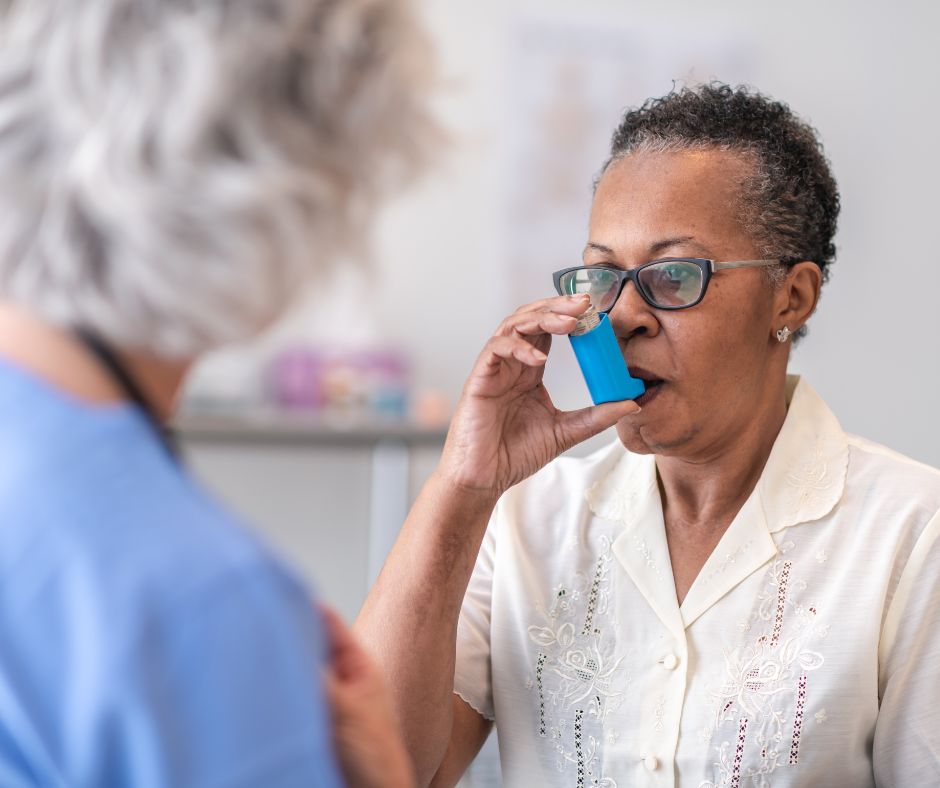Asthma symptoms such as wheezing, shortness of breath, chest tightness, and coughing are all too familiar for many. But all asthma is not created equal – and we aren’t just talking about the severity. There are actually different sub-types of asthma, each with its own unique triggers and ideal treatments.
Asthma is a chronic condition characterized by inflammation and narrowing of the airways, leading to breathing difficulties. It can be caused by a variety of factors and present in many different ways. Recognizing your asthma subtype can significantly enhance your quality of life. Let’s explore the different sub-types of asthma and uncover the treatments that can help you breathe easier.
Allergic Asthma
Allergic asthma is like that friend who overreacts to everything. It’s triggered by common allergens like pollen, pet dander, and dust mites – and, unsurprisingly, it’s one of the most common types of asthma. The key to managing allergic asthma is avoiding triggers and using medications such as inhaled corticosteroids and leukotriene modifiers. It’s also helpful to treat your underlying allergies with immunotherapy, such as our sublingual allergy drops. A few drops under your tongue each day will keep allergy (and asthma) symptoms at bay!
Non-Allergic Asthma
This type is triggered by factors other than allergens, such as stress, cold air, or infections. Non-allergic asthma is less common than allergic asthma and typically occurs later in life. Managing it involves similar medications to allergic asthma, including long-term control medications and quick-acting inhalers.
Cough-Variant Asthma (CVA)
As the name suggests, this type of asthma is marked by a dry and persistent cough. This is commonly the only symptom, leading many to confuse it with a lingering cold or allergies. It’s most common in young children and is usually triggered by upper respiratory infections, exercise, cold weather, and seasonal allergies. If left untreated, CVA can lead to classic asthma symptoms. Treatment typically involves inhalers and bronchodilators.
Exercise-Induced Bronchoconstriction (EIB)
Formerly known as exercise-induced asthma, EIB is the modern term for asthma-like symptoms that flare up during or after vigorous exercise. Symptoms include cough, wheezing, shortness of breath, and chest pain. EIB is most commonly associated with cold-weather sports and intense activities like long-distance running. Up to 90% of patients with asthma have EIB, but you can also have EIB but not have asthma. Treatment typically involves using an inhaler before periods of exercise and otherwise as needed.
Nighttime Asthma
If asthma is turning your nights into a nightmare, you’re likely dealing with nighttime asthma. People with this type of asthma have worsening symptoms at night, which can disrupt sleep quality and cause daytime symptoms like sleepiness and poor concentration. Doctors aren’t sure why nighttime asthma occurs in some patients, but some experts think it’s linked to hormonal changes that follow a circadian pattern. Long-acting asthma medications and keeping an allergen-free environment are the most effective treatments.
Occupational Asthma
Up to a quarter of adults with asthma have occupational asthma, which is caused by inhaling workplace irritants like chemicals, dust, fumes or vapors. Symptoms may occur shortly after your first exposure or may take weeks or months to develop. Identifying and avoiding these triggers, along with appropriate long-term control medication and rescue inhalers, is essential for treatment. Some patients choose to wear a mask or respirator at work to reduce exposure.
Seasonal Asthma
Seasonal asthma pops up at certain times of the year, usually in response to outdoor allergens. Patients with seasonal asthma find their symptoms are exacerbated by seasonal changes, such as spring pollen, or cold weather. Like allergic asthma, the key to treating seasonal asthma symptoms involves avoiding known triggers, using control medications like inhaled corticosteroids, and having a quick-relief inhaler on hand. Allergy immunotherapy through our sublingual allergy drops can also provide lasting relief of seasonal allergies and asthma flares.
Understanding your asthma subtype is the first step toward breathing easier. At America’s Best Care Plus, we’re dedicated to supplying you with the medications needed for effective asthma management through our respiratory supply program. From nine effective medications to nebulizer kits and accessories, we have the supplies you need to take the burden out of breathing.

